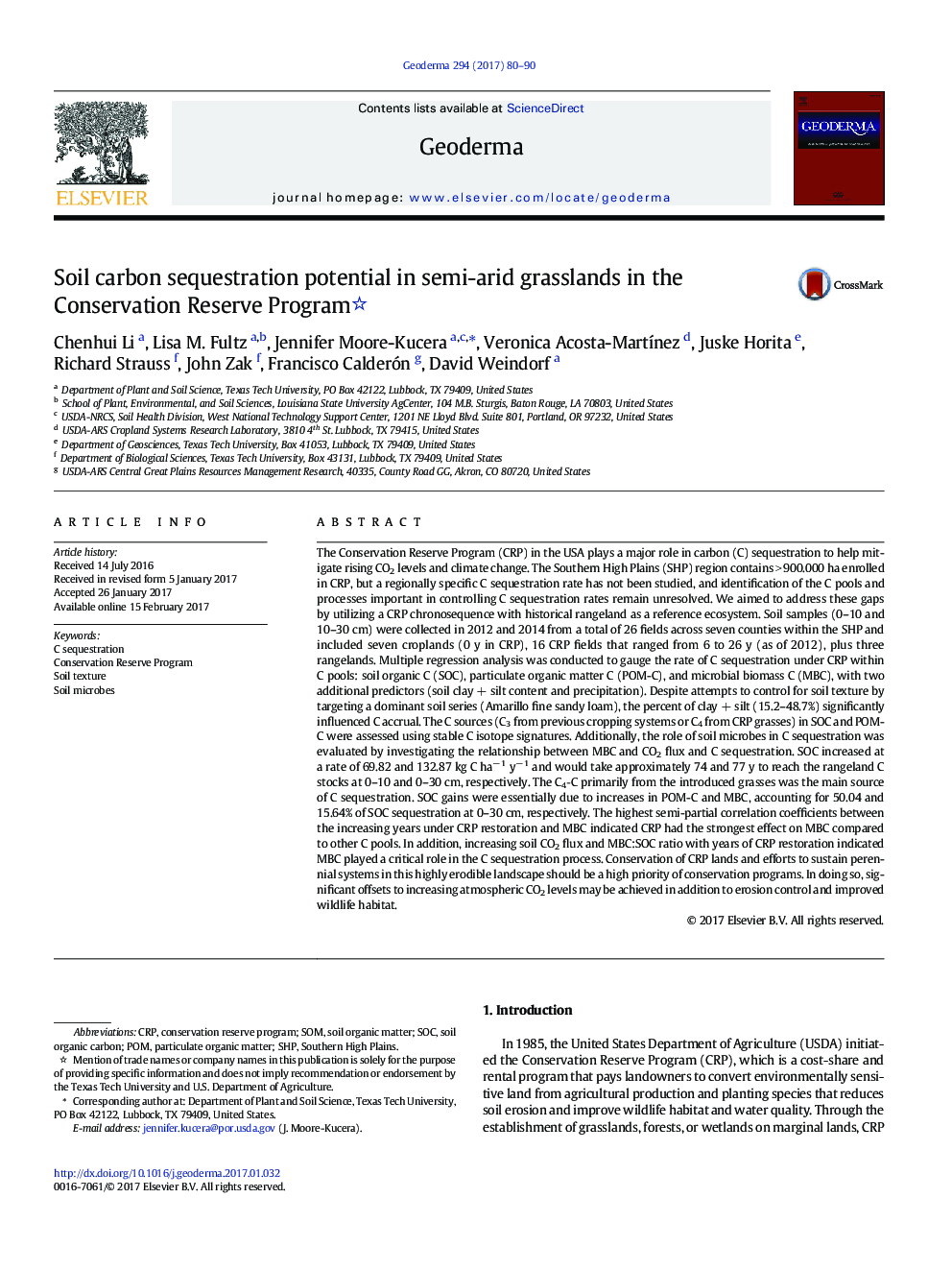| کد مقاله | کد نشریه | سال انتشار | مقاله انگلیسی | نسخه تمام متن |
|---|---|---|---|---|
| 5770392 | 1629423 | 2017 | 11 صفحه PDF | دانلود رایگان |
- Soil texture has to be considered for C sequestration estimation.
- CRP sequestered 132.87 kg C haâ 1 yâ 1 in 0-30 cm on the Southern High Plains.
- In grassland systems, soil microbes played a significant role in C sequestration.
The Conservation Reserve Program (CRP) in the USA plays a major role in carbon (C) sequestration to help mitigate rising CO2 levels and climate change. The Southern High Plains (SHP) region contains > 900.000 ha enrolled in CRP, but a regionally specific C sequestration rate has not been studied, and identification of the C pools and processes important in controlling C sequestration rates remain unresolved. We aimed to address these gaps by utilizing a CRP chronosequence with historical rangeland as a reference ecosystem. Soil samples (0-10 and 10-30 cm) were collected in 2012 and 2014 from a total of 26 fields across seven counties within the SHP and included seven croplands (0 y in CRP), 16 CRP fields that ranged from 6 to 26 y (as of 2012), plus three rangelands. Multiple regression analysis was conducted to gauge the rate of C sequestration under CRP within C pools: soil organic C (SOC), particulate organic matter C (POM-C), and microbial biomass C (MBC), with two additional predictors (soil clay + silt content and precipitation). Despite attempts to control for soil texture by targeting a dominant soil series (Amarillo fine sandy loam), the percent of clay + silt (15.2-48.7%) significantly influenced C accrual. The C sources (C3 from previous cropping systems or C4 from CRP grasses) in SOC and POM-C were assessed using stable C isotope signatures. Additionally, the role of soil microbes in C sequestration was evaluated by investigating the relationship between MBC and CO2 flux and C sequestration. SOC increased at a rate of 69.82 and 132.87 kg C haâ 1 yâ 1 and would take approximately 74 and 77 y to reach the rangeland C stocks at 0-10 and 0-30 cm, respectively. The C4âC primarily from the introduced grasses was the main source of C sequestration. SOC gains were essentially due to increases in POM-C and MBC, accounting for 50.04 and 15.64% of SOC sequestration at 0-30 cm, respectively. The highest semi-partial correlation coefficients between the increasing years under CRP restoration and MBC indicated CRP had the strongest effect on MBC compared to other C pools. In addition, increasing soil CO2 flux and MBC:SOC ratio with years of CRP restoration indicated MBC played a critical role in the C sequestration process. Conservation of CRP lands and efforts to sustain perennial systems in this highly erodible landscape should be a high priority of conservation programs. In doing so, significant offsets to increasing atmospheric CO2 levels may be achieved in addition to erosion control and improved wildlife habitat.
Journal: Geoderma - Volume 294, 15 May 2017, Pages 80-90
